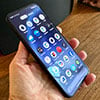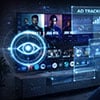The electronic products in our homes enhance our lives in countless ways. But these devices can also be among the most dangerous products we have––putting some of us, especially young children and the elderly, at risk of serious injury or even death. The risks run from flat-panel TVs that topple onto toddlers to button-sized batteries that become poisonous pills.
Yet avoiding these hazards could be as simple as taking a few precautionary measures. Here's what you should know and do, before it's too late:
#5 - Baby Monitors: Mind the Cords
Stat: Seven deaths since 2002
By definition, a baby monitor must be placed near a crib, but this raises the risk of strangulation for the child, who may be tempted to play with the device's cord if it’s within reach.
The CPSC has noted at least seven infants and toddlers who have strangled with baby monitor cords and three infants and toddlers who have nearly strangled since 2002, with the youngest victims being six months old.
Make sure your baby monitor is placed so that the cord is more than arm's-length away from the child––ideally, at least three feet away.
Also, it's not just baby monitors that present this strangulation danger. Movement-monitor sensor cords also should be kept taut and not dangling, the CPSC warns.
#4 - Button Cell Batteries: Potential Poison Pills
Stat: 3,500 injuries, nine deaths since 1985
The small coin-sized button cell batteries commonly used in remote controls, garage door openers, key fobs, light-up shoes, flashing jewelry, digital ear thermometers and bathroom scales are surprisingly dangerous. According to the National Capital Poison Center (NCPC) in Washington, DC since 1985 more than 60,000 people swallowed miniature disc or “button” batteries, resulting in over 3,500 injuries and nine deaths, most of them children under six years-old.
The batteries can get stuck in children’s throats where they can cause severe chemical burns. The effect starts within minutes of ingesting the battery and within two hours can burn a hole through the esophagus where it's lodged, says Toby Litovitz, MD, executive and medical director of the NCPC.
Parents should be careful not to leave a "dead" button battery within a child's reach when putting a new battery in a device. Even a dead battery still has enough of a residual charge to cause the same sort of burn, Litovitz explains.
The batteries that posed the greatest risk are labeled CR 2032, CR 2025 and CR 2016, or BR 2032, BR 2025 and BR 2016, she adds.
#3 - Shredders: The Home Office is No Place for Kids
Stat: 2,700 injuries in 2010
Paper shredders don’t just pose a threat to sensitive documents. In 2010 CPSC estimated that there were 2,700 emergency room visits involving consumers of all ages because of incidents with paper shredders.
The reasons for these visits can vary broadly, ranging from entrapping a finger to the paper shredder falling over and causing a foot injury. So keep kids and pets away from the home office and its paper shredder.
#2 - Flat-Panel TVs: Bolt Down or Hang Up
Stat: 18,000 injuries a year, one child death every two weeks
According to the U.S. Consumer Product Safety Commission (CPSC), on average one child dies every two weeks when a TV, furniture or appliance falls on him, and each year on average more than 18,000 children eight-years-old and younger are injured in this same way.
"Parents think about gates to prevent falls down the stairs, about safety in the kitchen to keep kids away from stoves, but there can be that hidden hazard: the TV and that old piece of furniture that you have it sitting on," CPSC spokesman Scott Wolfson says, adding that even bulky old-fashioned TVs can be unstable if perched on a bookshelf or a too-small stand.
Babyproofing your home theater by mounting the TV on the wall or securing it to furniture which is also bolted to the wall or to the floor prevents these accidents.
#1 - Cell Phones: The Biggest Killer
Stat: 995 deaths in 2009
There are three main types of distraction: visual, which takes your eyes off the road; manual, which takes your hands off the steering wheel; and cognitive, which takes your thoughts away from the primary task of driving. Unfortunately, texting on a cell phone combines all three forms of distraction, making it especially dangerous while driving.
But that hasn't stopped drivers from doing it. According to the National Highway Traffic Safety Administration, cell phones were a factor in 18% of distracted driving fatalities, leading to 995 deaths in 2009.
For drivers, there are hands-free technologies, such as Bluetooth speakerphones built into cars and Bluetooth headsets. Even these aren’t much help, though. The Insurance Institute for Highway Safety found that using a cell phone while driving—handheld or hands-free—slows a driver’s reaction time to the same speed as a person with a blood alcohol level of .08 percent (the legal limit). Apps that prevent cell phone use while driving are better options.
And the danger is not limited to drive time, texting while walking also is hazardous, and not uncommon.
There is some hope for those walking-while-texting culprits, though: A variety of apps for the iPhone and iPad superimpose use the device’s back-facing camera to create a live-action background for messaging functions, allowing users to keep an eye on where they’re going even as they type e-mails, text or chat . The selection includes iType2Go Pro (iOS $1.99), Type n Walk (iOS $0.99, Android free), Text Vision (iOS $0.99), Type n View (iPad free), Type n Go Pro (Android $0.99), Chat & Walk for Facebook (iOS $1.99) and Type n Step HD (iPad $0.99).

















From John McPhee on September 13, 2011 :: 12:27 pm
This alert to the injury hazards of technological products is much appreciated. These of course are in addition to the hazards of radiation emissions of wireless products, such as baby monitors, which are unregulated. On the FCC website it clearly states that there are no federally mandated radiofrequency standards.
The standards proposed by the EPA, after 17 years of outstanding and diligent research between 1970 and 1987 in their own state of the art lab, were rejected for the last time by Congress in 1995, as if such standards could be optional. This is most unfortunate, as wireless products have now become ubiquitous in the American living environment, having grown from a choice of about 15 products in the 80’s to over 100 products available in 2011. Truly, the situation with wireless technology is one of “buyer beware”, as 70% of non-industry financed studies indicate major health hazards,and wireless systems are already being removed from schools and public buildings throughout Europe, as well as private businesses and homes. If you have a wireless system in your home, please turn it completely off when not in use. These frequencies pass directly throught the human body, disrupting our entire physiological operation by confusing signals at the cellular level. Symptoms begin with insomnia, followed by low thyroid, memory lapses, hypertension, high blood pressure, diabetes, and, finally, cancer, strokes or heart attack. Wired systems are readily available as well, so why even have a wireless system at all?
It is worth your health and the well being of your family?
Reply
From Josh Kirschner on September 13, 2011 :: 12:45 pm
Hi John,
Thanks for your comments. The latest research is showing no links between wireless use (at least for cell phones) and cancer. We wrote this up back in July here: https://www.techlicious.com/blog/evidence-shows-cancer-risk-from-cell-phones-is-unlikely/. It is even less likely that other devices such as baby monitors or wireless networks, which are not held neaar the body, would create any risk.
Other studies are inconclusive about why cell phones may cause symptoms, such as insomnia. It’s quite possible that using devices right before bed simply gets your mind worked up, and it has nothing to do with a physiological effect of the cell phone on your body or cell functions.
If you can link to specific studies that show otherwise, please do.
Best,
Josh Kirschner
Founder, Techlicious
Reply